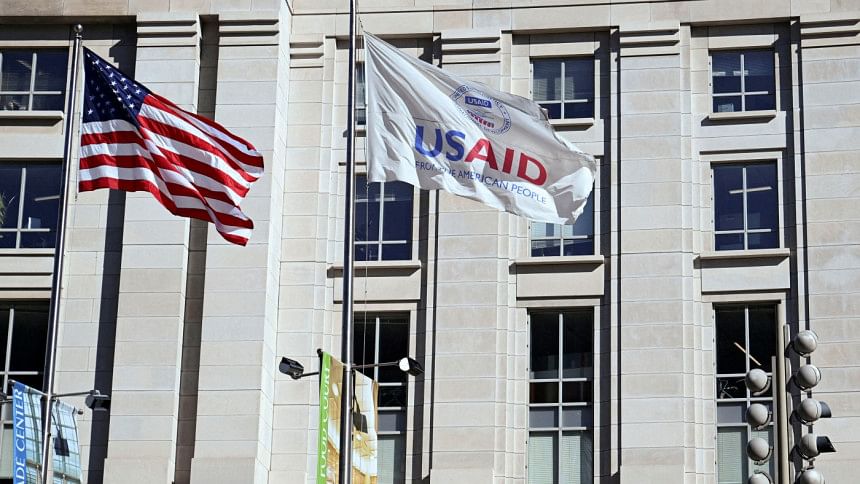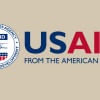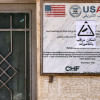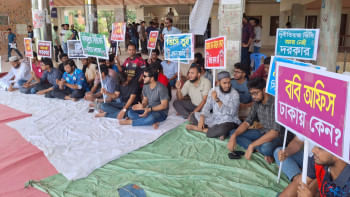What can the world do as US aid cut pushes millions to the brink?

A skinny, malnourished and tattered mother staggers towards a nearly empty medical clinic in a remote village in South Sudan. Her weak baby tries to nurse but finds no milk. A merciless midday sun scorches down. This scene, a daily reality for millions, is worsened by the US government's funding cuts to development organisations and NGOs. The impact of these cuts is not theoretical; it's a brutal reality playing out in some of the world's most vulnerable regions.
The situation is particularly grave in Yemen, a nation ravaged by conflict. According to UNICEF, around 17 million people in the country, more than 40 percent, are food insecure, of which 4.7 million are at crisis levels. Sixty-four percent of the households can't obtain their minimum food needs.
South Sudan, another nation grappling with conflict and climate-related disasters, also faces immense challenges. Nine million people (54 percent of them children) require humanitarian assistance, including at least 7.1 million people who are estimated to have been severely food insecure at the peak of the lean season between July and September.
The crisis extends to Syria, where years of conflict have left over 16 million people in need of assistance. Any reduction in aid worsens an already precarious situation.
In Afghanistan, 14.8 million people have acute food insecurity, 3.5 million children are malnourished, and $652 million is urgently needed for World Food Programme (WFP) operations up to June 2025.
These statistics are not mere numbers, but the faces of human suffering. US aid has been a vital lifeline supporting essential health, education, human rights, and disaster relief programmes for decades. This funding has empowered communities to build resilience and improve their lives. With diminishing resources, these organisations are struggling to continue their vital work.
The impact is tangible. In South Sudan, medical clinics, already stretched to their limits, struggle to provide even basic care. All over Africa, organisations combating the effects of climate change and hunger face severe limitations in their ability to deliver essential aid.
The consequences are particularly acute in conflict zones. Organisations working to promote peace and human rights find their ability severely diminished. In Yemen, the reduction in funding threatens to plunge the nation deeper into a humanitarian catastrophe. In Myanmar, the country ravaged by the world's longest-running civil war, 35 percent of the population—18.6 million out of 53.8 million—need humanitarian aid. The humanitarian agencies are left scrambling for alternative sources of support, forced to lay off staff, cancel medical services, and close facilities.
This is not simply a matter of budgetary adjustments. It is a matter of human lives. Reductions in funding for education and healthcare perpetuate cycles of poverty, denying future generations the opportunity to build a better future. The weakening of civil society organisations undermines democratic institutions, silencing the voices of the most vulnerable.
Faced with reduced US aid, we must proactively adapt, innovate, and find ways to continue humanitarian operations. First, diversify funding streams. Organisations can seek support from various sources instead of relying solely on one donor. This means building relationships with European and other governments, tapping into their established development programmes, and engaging with multilateral institutions like UN agencies.
Second, strengthen strategic partnerships. By forging alliances with local community organisations, NGOs can share resources, enhance programme effectiveness, and foster a sense of shared ownership. They can also collaborate with other NGOs to create more powerful and effective programmes.
Third, invest in local sustainability. Develop robust local fundraising strategies to reduce reliance on external donors and empower communities to take ownership of their development. This involves building local ability and fostering a culture of giving.
Fourth, use digital platforms. Online fundraising, social media campaigns, and crowdfunding initiatives offer powerful tools to reach a global audience and mobilise support. Storytelling and transparency are critical when using these platforms.
Fifth, improve operational excellence. Streamline operations, focus on high-impact programmes, and implement rigorous monitoring and evaluation systems to ensure that every dollar is used effectively and shows tangible results.
Sixth, engage in advocacy. Development organisations can raise awareness about the impact of funding cuts and advocate for sustainable development policies. This involves engaging in policy dialogues, informing policymakers, and amplifying the voices of the vulnerable. NGOs must become more adaptable, resourceful, and collaborative to ensure that their vital work continues.
Let's get back to the mother and her child. As they reach the nearly empty medical clinic in South Sudan, will they find the care they desperately need? Will the limited resources be sufficient? This is a stark reminder of the devastating consequences when the world turns its back on those in need. The effects of funding cuts are not abstract concepts; they are the faces of hunger, the cries of despair, and the loss of human potential. The world cannot afford to ignore this unfolding tragedy.
Dr Sayeed Ahmed is a consulting engineer and the CEO of Bayside Analytix, a technology-focused strategy and management consulting organisation.
Views expressed in this article are the author's own.
Follow The Daily Star Opinion on Facebook for the latest opinions, commentaries and analyses by experts and professionals. To contribute your article or letter to The Daily Star Opinion, see our guidelines for submission.

 For all latest news, follow The Daily Star's Google News channel.
For all latest news, follow The Daily Star's Google News channel. 








Comments